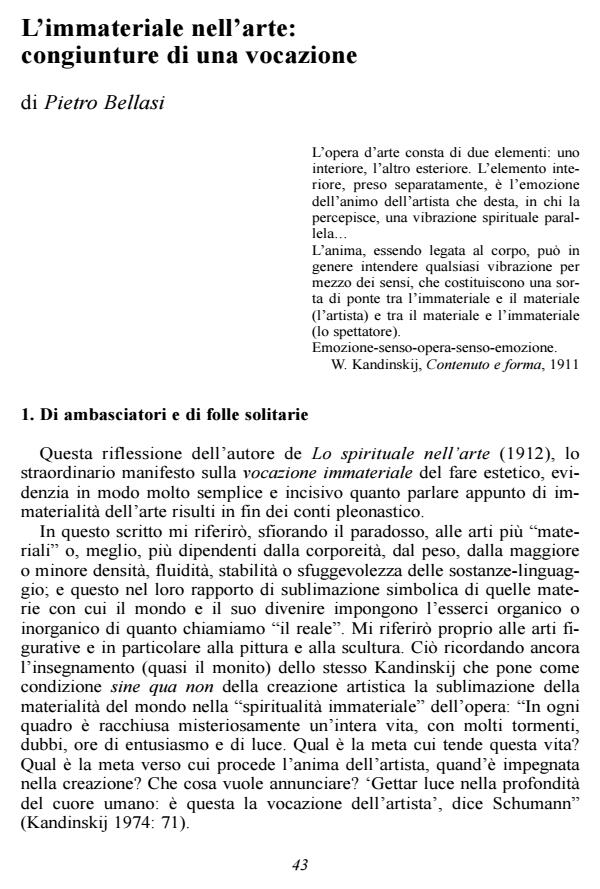L'immateriale nell'arte: congiunture di una vocazione
Journal title SOCIOLOGIA DEL LAVORO
Author/s Pietro Bellasi
Publishing Year 2006 Issue 2005/99
Language Italian Pages 14 P. File size 923 KB
DOI
DOI is like a bar code for intellectual property: to have more infomation
click here
Below, you can see the article first page
If you want to buy this article in PDF format, you can do it, following the instructions to buy download credits

FrancoAngeli is member of Publishers International Linking Association, Inc (PILA), a not-for-profit association which run the CrossRef service enabling links to and from online scholarly content.
The author is inspired by Wassily Kandinksy’s famous treatise Über das Geistige im der Kunst (Concerning the Spiritual in Art, 1912) when he states that the vocation for the immaterial is an essential ingredient in aesthetic practice. Taking into consideration, above all, the figurative arts, he does not intend to recount the history of this vocation, but rather to refer to a number of significant examples and periods of decisive importance also for modern art. The most significant example for the author is constituted by the Dada movement, which in the collective imagination tends to defuse the most dangerous elements of the infatuations or fears and senses of guilt generated at the beginning of the last century by scientific and technological progress and, above all, by the myths of mechanism. The analysis stops on the threshold of the modern society of virtual immateriality with a reference to two great post-modern artists who also feel the need to stress the immaterial vocation of art by grafting it onto ‘libertarian’ machines that are unproductive, useless and dematerializing: the artists are Jean Tinguely and Yves Klein.
Pietro Bellasi, L'immateriale nell'arte: congiunture di una vocazione in "SOCIOLOGIA DEL LAVORO " 99/2005, pp , DOI: